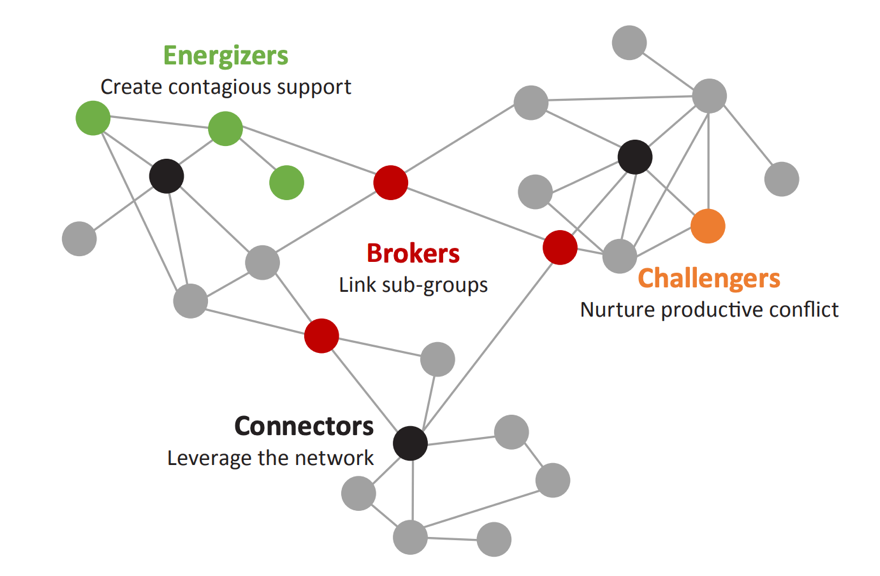Social Network Analysis
What Is Social Network Analysis?
The Fort Collins Network Environmental Sustainability Tool (NEST) was generated using social network analysis. Social network analysis combines qualitative and quantitative data to analyze the structure of social networks and reveal how resources and information flow throughout a particular network. This approach to understanding organizational or inter-organizational dynamics is useful because it reveals who the “power players” are in the network, how resources circulate, and who performs “bridge work” between main aggregates of actors. [8] When networks are mapped in this way, it becomes possible to infer why individuals or organizations do or do not enter into collaboration with one another, and what the existing barriers to collaboration are based on gaps in the network structure.

Structure-based roles of network actors.
Source: Cross, Rob, Heidi Gardner, and Alia Crocker. 2019. “Networks for Agility: Collaborative Practices Critical to Agile Transformation.” Connected Commons.
Because this project aims to develop strategies to improve the flow of information, resource sharing, and collaborative efforts among those working in the field of environmental sustainability in Fort Collins, social network analysis is a useful tool for the insights that it provides. Social interactions are crucial to understanding why collaborative relationships emerge between certain players and not others, how individuals’ positions within the network affect how they engage with others, and how power dynamics emerge within coalitions of groups in the network. [9]